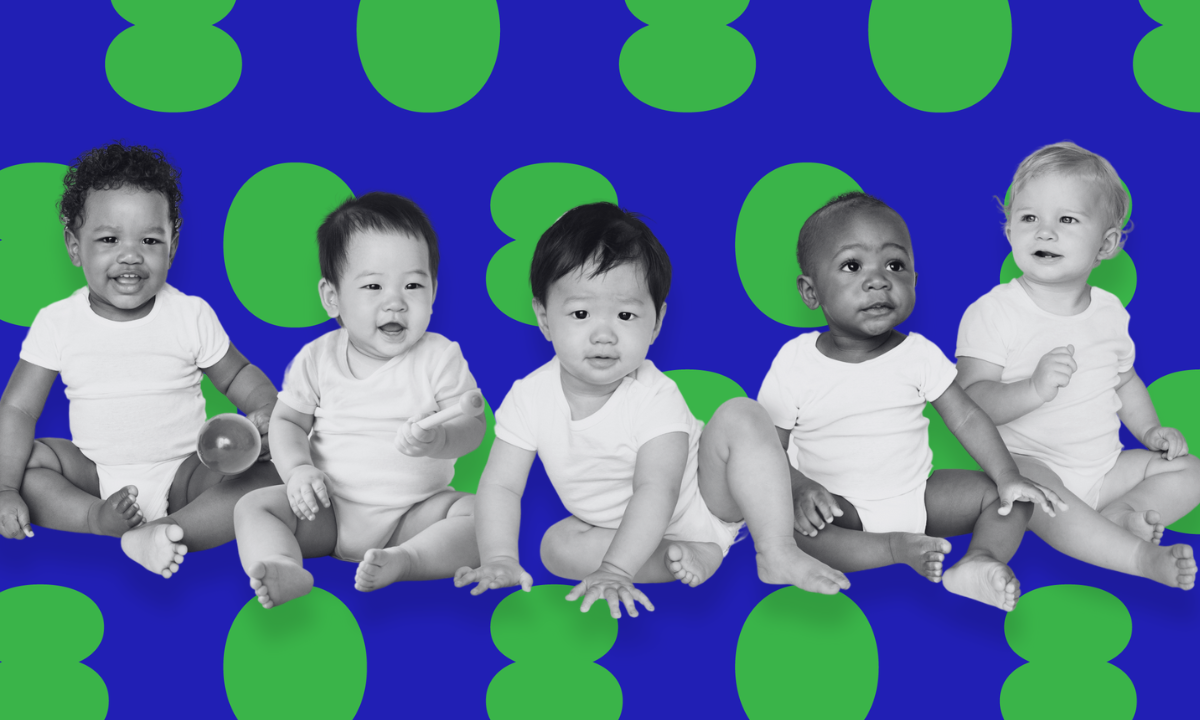Breakthrough Research Shows the Complexity and Brilliance of Babies’ Brains
Scientists are developing tools to discover the spectacular processes behind infant and toddler brain and language development.

Join our zero2eight Substack community for more discussion about the latest news in early care and education. Sign up now.
This roundup features a curated collection of stories on an important early care and education topic.
For far too long, our culture has looked at babies as blank slates, entering the world with bare little brains just waiting for the adult world to fill them with words, ideas and its own version of wisdom. A more accurate way to think about babies might be as diminutive supercomputers, crunching data from day one; testing hypotheses; processing the complex sounds around them; mastering the floppy, uncooperative little bodies they’ve arrived in; and learning at lightning speed in whatever environment they’ve landed.
As never before, scientists have access to experimental methods and machines that enable them to understand the neural mechanisms occurring as babies become children and learn to navigate their environment. With every scientific discovery, wonder deepens. The following stories offer a glimpse into some of the extraordinary research at the heart of these discoveries.
When you see a baby gazing on the world, you might imagine a little sponge passively soaking up information, but what’s actually going on is sophisticated computational wizardry that outpaces any known machine. Millisecond by millisecond, the baby is sorting multiple data feeds and running statistics to analyze the environment. “No computer, no matter how sophisticated, can do what a baby can do in listening to language input and deriving the words, grammar and the sound contrasts that create language,” says language expert Patricia Kuhl, co-director of the Institute for Brain and Learning Sciences at the University of Washington.
After babies grasp the basics of “mama,” “dada” and ”baba,” and understand that they can summon important people and items with a word or two, they soon move on to two key words in human development: ”What’s that?” Babies occupy a world of wonder, and their senses are bombarded with new information at every turn. From their first moments, human infants are driven by the desire to find out. Their investigations are fueled by the same mechanisms that scientists use to develop theories. Babies are exploring their world in ways that are exquisitely intelligent, sensitive and scientific.
Adults are encouraged to get sufficient exercise to support their brain health. As it turns out, cardiovascular health appears to equate to better cognitive function for children as well, with benefits observable as early as 4 years old. Scientists found that preschool children with higher cardiorespiratory fitness scored higher on tasks related to general intellectual ability as well as in their use of expressive language. They performed better on computerized tasks requiring attention and multitasking and showed the potential for faster processing speeds and greater resource allocation in their brains as they performed the tasks.
Fascinating research tells us that the baby isn’t the only one growing and changing when an infant is born. The intense caregiving required for newborns causes observable changes in the brain of the caregiver: They develop “parenting brain.” Those changes aren’t limited to the biological parents, they occur in the brains of everyone intimately involved in caring for the baby. It’s not just that some people are hardwired to be a parent, people become parents by how — and the degree to which — they respond to the child they’re caring for: The act of caregiving, not simply the act of giving birth, calibrates the brain.
Babies are born with brain connections for functions such as hearing, sight and movement. The white-matter pathways associated with language are also present at birth but continue to develop over the years. Scientists have found that these neural connections don’t simply grow, they are cultivated by their environments, and research shows that early interactive language experiences uniquely contribute to the brain development associated with long-term language and cognitive ability. The more back and forth between babies and parents, the greater the growth of the brain in areas critical to the child’s ability to learn language and build vocabulary — effects that carry through early childhood and predict cognitive and linguistic ability into adolescence.
Get stories like these delivered straight to your inbox. Sign up for The 74 Newsletter


;)
